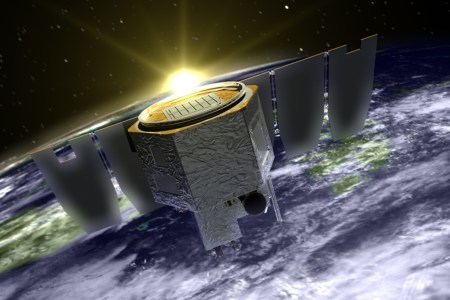Space isn’t all that crowded when viewed in totality, but the interstellar clutter intensifies when you narrow your scope down to low Earth orbit. NASA’s official website refers to this region of space as “an orbital space junk yard” with literal millions of objects moving at high velocity high above the planet’s surface. This can complicate matters for the operation of satellites and spacecraft (as illustrated, albeit in fictional form, in the film Gravity). And that leaves scientists with a lingering question: is there an easy way to minimize the risk of debris?
Scientists from Kyoto University, working in tandem with Sumitomo Forestry, had one idea: what about a satellite that’s made out of wood? And then they built it. LignoSat is scheduled to travel to the International Space Station in September. Two months later, it will enter orbit itself.
In this case, the materials used being capable of catching fire is a feature rather than a bug. As Tim Hornyak explained at Nature, LignoSat is designed to operate for roughly six months, at which time it will enter the Earth’s atmosphere and burn up. Mission accomplished, with no unsightly debris left over to potentially complicate upcoming space missions or making it harder for astronomers to monitor the stars.
The same team that worked on LignoSat have even grander ambitions for wood as a spacefaring material. They told Nature that they’re also exploring using wood for structures on the Moon or Mars.
NASA Atmospheric Satellite Ends Run 16 Years After Launch
That’s a lot longer than expectedAt least one scientist not involved with the project seems to think that wood checks off more boxes than you’d expect for space projects. “Wood is an effective insulator, capable of regulating temperature and minimizing heat transfer to maintain a comfortable indoor environment,” Swinburne University of Technology’s Nisa Salim told Nature. “Wood is easy to work with, renewable and biodegradable, aligning with sustainability goals for space exploration.”
Could the future of space exploration include one of the first materials humans used when building housing and tools? Sometimes the most classic tools remain the best.
This article appeared in an InsideHook newsletter. Sign up for free to get more on travel, wellness, style, drinking, and culture.



















